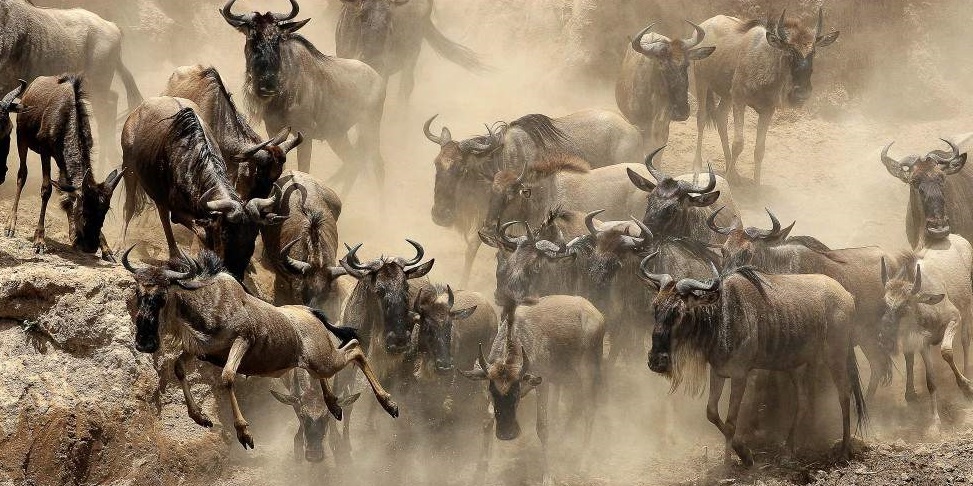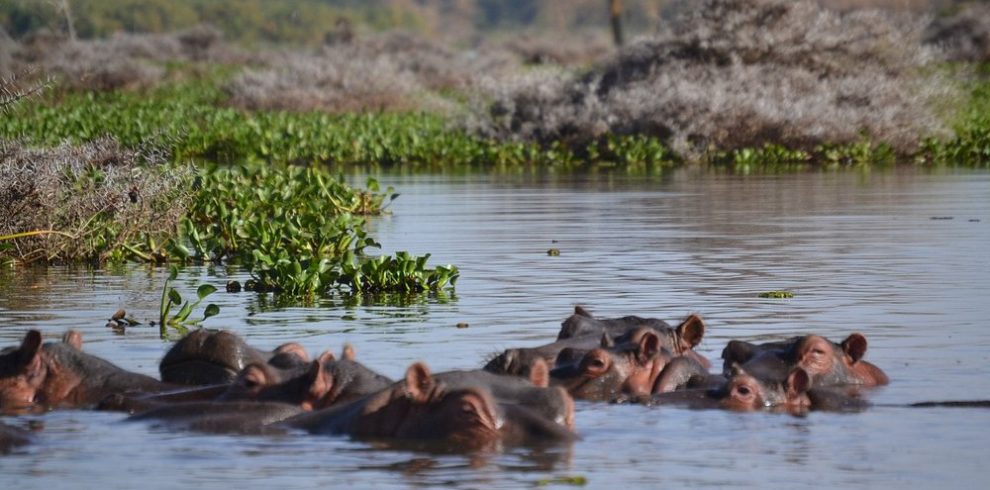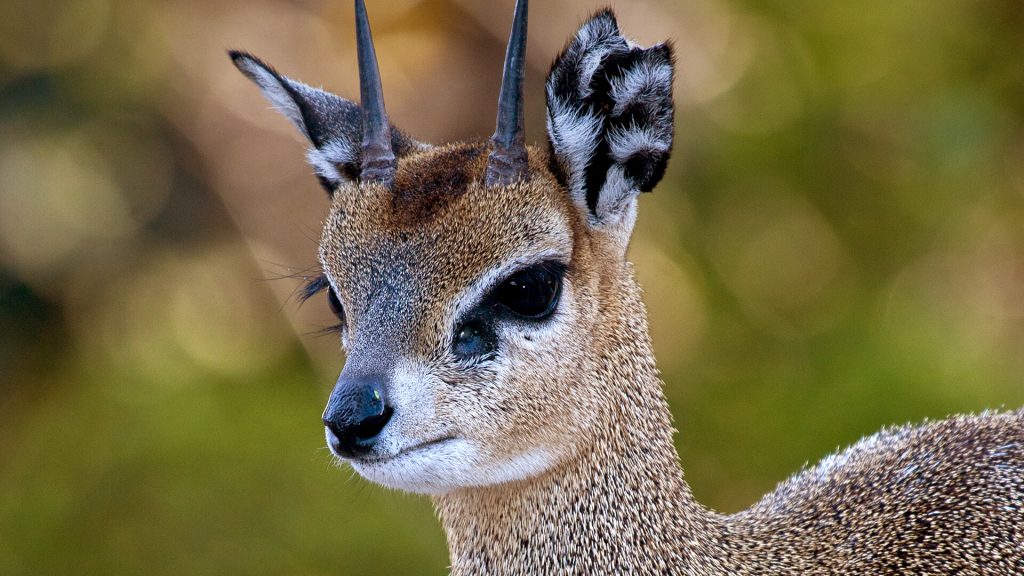
The Klipspringer (Oreotragus oreotragus) is a small, elusive antelope species that inhabits the rocky terrains of sub-Saharan Africa. Despite its relatively low profile compared to some of the larger and more charismatic African animals, the Klipspringer is an extraordinary creature with several remarkable traits that make it stand out in the African wilderness. With its specialized adaptations, unique behaviors, and niche role in its ecosystem, the Klipspringer is a fascinating subject of study for wildlife enthusiasts and researchers alike. In this article, we will explore 5 fascinating facts about the Klipspringer, revealing why this small antelope is one of Africa’s most intriguing and resilient species.
1. The Klipspringer Is an Exceptional Climber
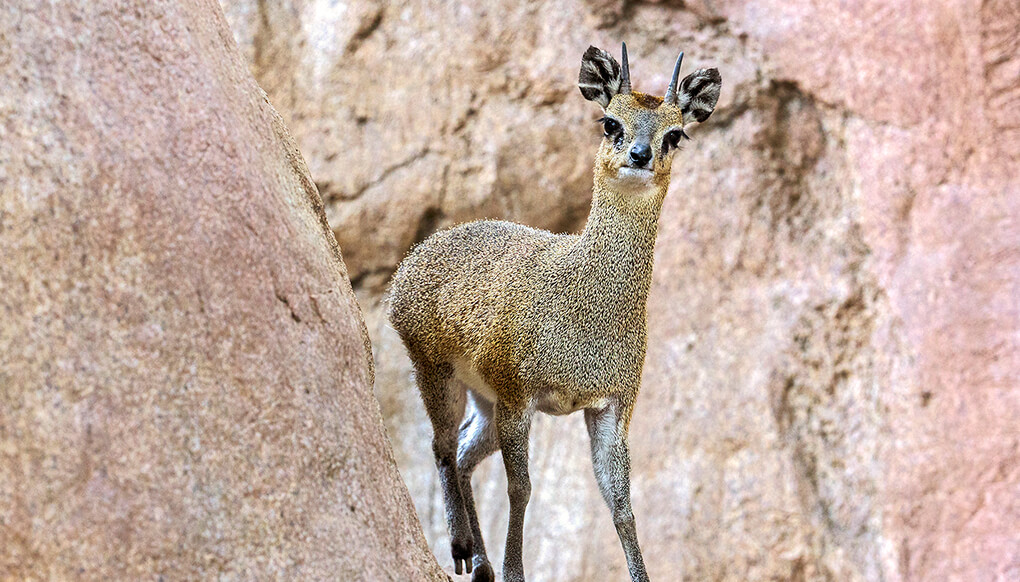
One of the most notable facts about the Klipspringer is its extraordinary ability to climb and navigate steep, rocky terrain with ease. The Klipspringer is specially adapted to life in the rugged environments of rocky hills, cliffs, and mountain slopes, which make it one of the most skilled climbers among African antelopes.
Specialized Hooves for Climbing
The Klipspringer’s ability to scale seemingly impossible rocky surfaces is largely due to the unique structure of its hooves. The hooves of the Klipspringer are small and have a rubbery texture that gives them remarkable traction on steep and slippery surfaces. The hooves are also very specialized with their broad and padded surface that gives the animals a good stable foothold as it climbs. The Klipspringer can easily navigate narrow ledges, rocky outcrops, and steep slopes, which are often inaccessible to other herbivores.
Habitat Adaptations
Klipspringers are typically found in rugged mountainous regions, where they can use their climbing skills to escape predators and find food. Their adaptation to rocky areas lets them utilize areas that are too harsh to be used by most other herbivores, providing them with a competitive advantage in places with low vegetation or high predator populations. By living in these elevated and difficult-to-reach places, the Klipspringer reduces its exposure to predators such as lions, leopards, and hyenas, making its life in the wild safer and more secure. It is not only an occasion to hide behind predators in these exceptional climbing capabilities. The Klipspringer can also access hard-to-reach food sources, such as grasses and leaves that grow in the crevices of rocks. This skill gives them the privilege of being able to survive in regions where food is less available, making them a very versatile species.
2. The Klipspringer’s Unique Diet and Feeding Habits
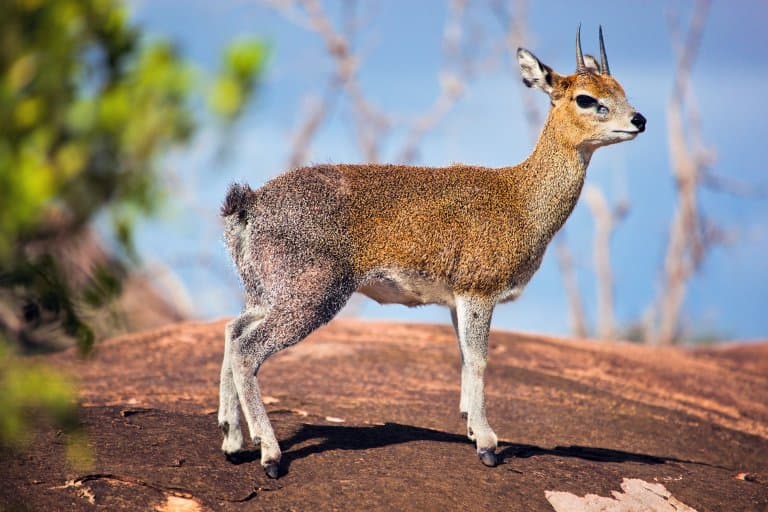
Another fascinating fact about the Klipspringer is its specialized diet, which plays an important role in its survival in rugged environments. Unlike many other antelopes that rely primarily on grasses, the Klipspringer has adapted to eat a variety of plant materials, including shrubs, herbs, and even certain types of leaves and fruits that are not typically consumed by other herbivores.
Grazing and Browsing
The Klipspringer is a mixed feeder, meaning it both grazes on grasses and browses on shrubs and trees. This diet flexibility allows the Klipspringer to take advantage of the different types of vegetation available in its rocky habitats. It normally feeds on shrubs and bushes that are on rocky slopes where grass is scarce and the trees are not dense. During the dry season, when grasses become scarce, the Klipspringer relies more heavily on shrubs and other vegetation that can withstand dry conditions. The animal also feeds on fruits, which also contain valuable moisture and nutrients. In particular, the Klipspringer’s ability to consume a wide variety of plants helps it survive in harsh and unpredictable environments where food availability can fluctuate.
Efficient Digestion
The Klipspringer has a highly efficient digestive system that allows it to extract maximum nutrition from its food. It has a specialized stomach, which makes it able to absorb the fibrous plants. This digestive efficiency is key to survival where food resources are scarce and difficult to obtain in a place. By extracting as much nutrition as possible from its diet, the Klipspringer can sustain itself even in environments where other herbivores might struggle.
3. The Klipspringer’s Exceptional Senses Help It Evade Predators

One of the key survival strategies of the Klipspringer is its sharp senses, particularly its exceptional vision and hearing. These acute senses are important in locating predators and snaring them in the harsh terrains they reside in. The Klipspringer has evolved to rely on its acute awareness of its surroundings to ensure its safety.
Keen Eyesight
The Klipspringer has excellent eyesight, which is essential for spotting predators from a distance. It has large round eyes situated on the sides of its head granting it a wide vision field. This allows the Klipspringer to detect potential threats, such as leopards or eagles, while they are still far away. The movements seen by the animal when far can give it sufficient time to run or hide into the rocky outcrops where it feels secure.
Acute Hearing
In addition to its sharp eyesight, the Klipspringer also has highly sensitive hearing, which further enhances its ability to detect predators. With its large, mobile ears, it can turn its ears to hear in different directions, enabling it to isolate any threats in any direction. The combination of keen eyesight and acute hearing makes the Klipspringer one of the most alert and cautious animals in its environment, giving it a better chance of avoiding predators.
Quick Reflexes
Along with its keen senses, the Klipspringer also possesses quick reflexes that enable it to escape danger with incredible agility. When threatened, the Klipspringer can leap or dart to safety, making use of its climbing abilities to reach difficult-to-access areas. This quick and nimble nature allows the Klipspringer to outmaneuver predators and evade capture, further enhancing its chances of survival.
4. The Klipspringer Has a Unique Method of Communication

Despite being relatively small and elusive, the Klipspringer has developed a range of communication methods to interact with other members of its species. These communication tactics play an important part in social interaction and group co-operation. The Klipspringer’s ability to communicate effectively is one of the fascinating facts about the Klipspringer.
Vocalizations
The Klipspringer is known to make a variety of vocalizations, including whistles, grunts, and snorts. These vocalizations also form the basis of communication between individual members of the group, especially in response to a perceived threat. For example, when a predator is spotted, the Klipspringer may emit a loud, high-pitched whistle or alarm call to alert others in the area. This vocalization is an alarm and is used to motivate the group to action either by retreating or going to a safe place.
Body Language
In addition to vocalizations, the Klipspringer also uses body language to communicate with others. The animal might also display some relevant postures, like standing in its position with its ears forward or even raising its tail to indicate that it is alarmed. These subtle gestures help other Klipspringers in the group interpret the situation and respond appropriately.
Social Behavior
Although the Klipspringer is not as social as some other antelope species, it does form small groups, particularly during the dry season when food can be more scarce. In these groups, individuals rely on one another for protection and support, using vocalizations and body language to maintain social cohesion and coordinate activities like foraging and moving to new areas.
5. The Klipspringer Is a Valuable Indicator Species

Another fascinating fact about the Klipspringer is its role as an indicator species in the ecosystems it inhabits. Indicators are species that allow us to understand the health and stability of the habitat. Because the Klipspringer relies on specific habitat features, such as rocky outcrops and high-altitude vegetation, changes in its population can signal shifts in the quality of the environment.
Ecological Monitoring
The Klipspringer is often used by researchers and conservationists to monitor the health of rocky habitats and ecosystems in sub-Saharan Africa. A decline in Klipspringer populations can indicate habitat degradation, loss of food sources, or the encroachment of invasive species. Conversely, stable or growing populations of Klipspringers suggest that the habitat is still intact and able to support these specialized animals.
Conservation Importance
In addition to being an indicator species, the Klipspringer is also an important part of the ecological web in its habitat. It contributes to seed dispersion, plant regulation, as well as maintaining biodiversity in the areas that it lives in. As such, the conservation of the Klipspringer can have far-reaching benefits for other species in its ecosystem, highlighting the importance of protecting these remarkable animals.
Conclusion
The Klipspringer may be a small and often overlooked species, but the facts about the Klipspringer reveal a remarkable creature that is perfectly adapted to its rocky, mountainous habitat. From its exceptional climbing abilities to its specialized diet, keen senses, unique communication methods, and role as an indicator species, the Klipspringer plays a vital role in maintaining the balance of its ecosystem. Such a secretive antelope is a testament to the forces of evolution and the necessity of specialized adaptations in the survival of an animal in some of the harshest environments the world will provide. By understanding and appreciating the Klipspringer’s unique traits and behaviors, we can gain a deeper appreciation for the complexity of the natural world and the delicate balance that sustains it.

